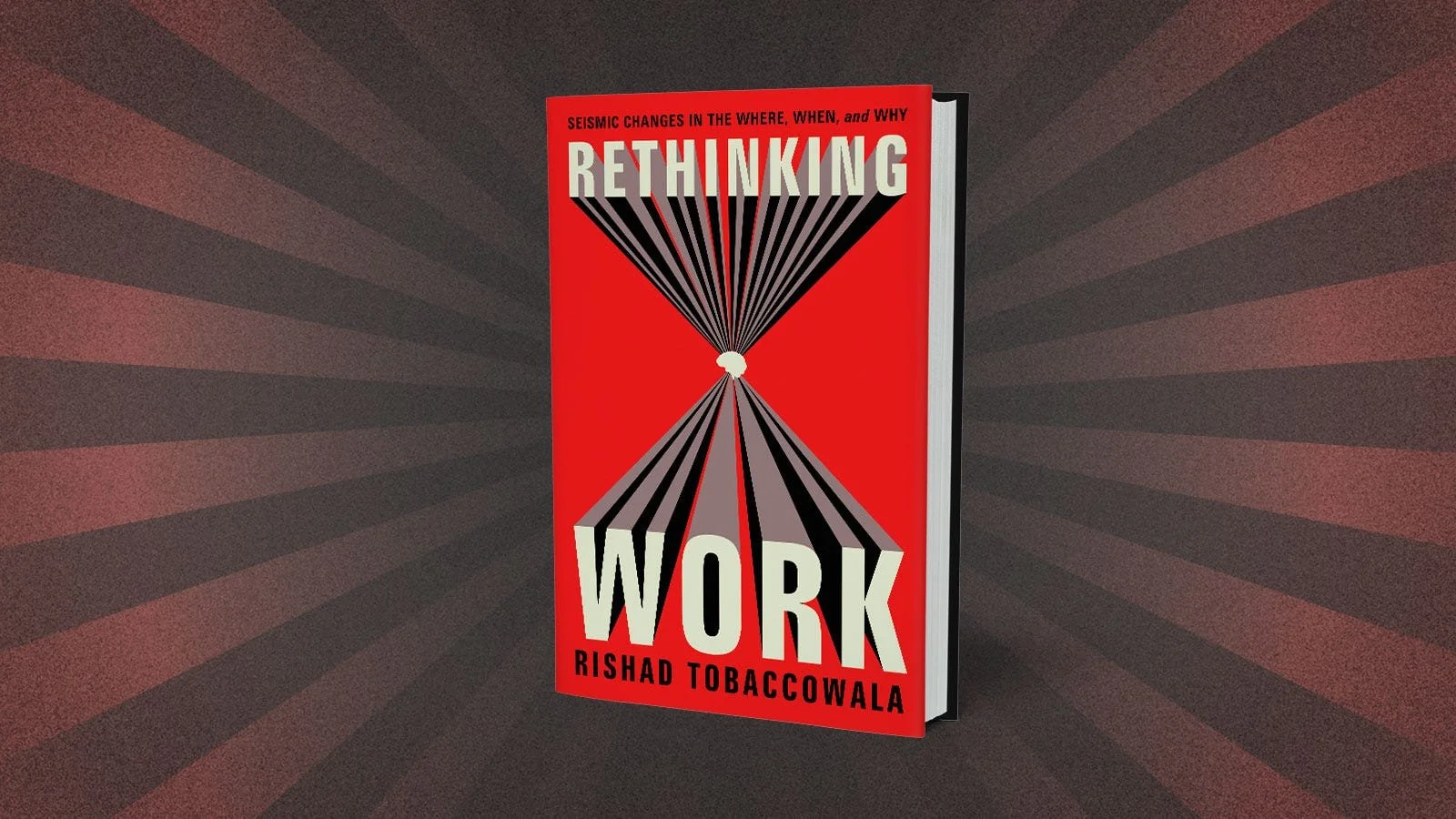How to be more Effective.
One of the dozen topics I have written on over the past five years is how to be more effective. You can access all the best pieces in section 4 here: https://rishadtobaccowala.com/100
The 3 keys to being effective are 1) leveraging the only asset one has which is time, 2) making sure that every interaction has the ability to be a tattoo moment, and 3) soaring through feedback.
1. Time is the essential asset.
Franz Kafka wrote “The meaning of life is that it stops”.
How we spend our days is, of course, how we spend our lives wrote Anne Dillard.
Tell me, what is it you plan to do with your one wild and precious life? asked Mary Oliver
Life is a journey through time in search of meaning.
A definition of success is the ability to spend time in the way that gives one joy.
To understand what is important before it is too late.
Successful firms and people use time differently than others.
Four behaviors/beliefs that are common to most successful individuals and firms:
The Power of Compound Interest/Compound Improvement: The most powerful concept in gaining wealth or knowledge is continuous growth over a sustained time period.
See early what others see late: Almost every successful person or company recognized a trend when it was a little stream rather than a gushing river and then committed to align with it.
Persistence: They just keep on going through adversity and setback and they remember Queen Elizabeth the First who said “Time dissolves more problems than man solves” or “that persistence isn’t just continuing to try— it is the runway that gives your talent time to take off.”
Focus: The key to effectiveness is to focus. Here are two filters on how to focus:
a) Comparative Advantage: We should spend our time doing things that we can do better than most people. Some focus areas are easy like being a spouse or a parent, since by definition we should be able to do this better than other folks. However, for many of the errands we run and the assignments we take on at work, it is important to ask if we can outsource or delegate or find a colleague who is better than us so we can focus on what we are best at.
b) Positive Outcome: We should try to choose how we spend our time in ways in which we create a positive outcome. Either we 1) earn a financial reward, 2) learn something new, 3) help someone else or the team get better or 4) the experience in itself feels good.
2. What one should bring to an interaction.
There are a lot of books and articles on meeting management and how to get the most out of gatherings.
Most of them are utter and complete BS because they all focus on how you can get the most out of an interaction, while the focus should be how can you give the most in an interaction.
If you go to a meeting with an “extraction” mindset versus a “giving” mindset you are likely face several problems including a) missing meetings where you may have been able to share your knowledge and therefore build goodwill b) become so focused on what you are looking for that you do not discover what you need.
Instead go to the meeting with this:
a) Generosity.
How can one leave the person or the people whom one is meeting with or presenting to with a gift?
Knowledge. Appreciation. Guidance. These are three ways to bring generosity to an experience.
b) Empathy.
How can one truly understand the other persons perspective and point of view because in doing so one will grow even if we might disagree with their perspective or view.
c) Attention.
When we have a great interaction, we feel that the person talking to us is paying attention to us.
They do not appear distracted looking away at some screen or signal they are participating grudgingly in the interaction. They are there in body and spirit.
People watch for tone of voice, facial expressions, and small gestures rather than one’s physical presence if one is paying attention paying attention.
While these are what you bring to a meeting ideally you want people to leave the meeting with these:
a) Clarity.
In a great interaction or meeting people come out with a clearer understanding of a situation, with greater precision of knowledge, and clear-cut next steps than before the meeting or interaction.
b) Belief.
It is one thing to be clear as to what must be done next but as important is to leave an interaction with a greater belief in your or your team’s ability to do what is necessary.A key is to leave someone feeling better about themselves after you meet them rather than worse even if you provide them with less than positive information by showing how you or another individual tackled the same problem, reminding them of the times they recovered when they were knocked back by a challenge or sharing your individual stories of tackling similar situations.
c) Energy.
We are living in a time of great change, accelerating velocity of business and multiple pressures.
This is leaving people often drained, burnt out and wanting to just curl up under a blanket from the noise and tension.
Great interactions leave people rejuvenated, replenished, and refreshed.
While clarity is about the mind, belief about the heart, energy is about the body.
Bringing energy to a meeting can boost others. Energy is contagious
The ideal interaction is a TATTOO interaction in that it so impacts people that they remember it for years. Read Tattoo Moments.
3. Feedback
To grow one needs to continuously improve.
A key ingredient to improvement is feedback.
Feedback however is both difficult to give and receive.
The six steps to giving better feedback.
Best practices suggest that there are six approaches that can help people give and accept feedback:
1. Focus on how the task or the process could have been improved rather than criticize the person: By focusing on how an assignment could be done better the emphasis is in on the product and not the person.
2. Compare the shortfalls to a higher standard that might have been met on another project or another time: By recalling assignments or times where the individual or team did a great job, one reinforces to the person or team that they are capable of having done better. The emphasis is on what was less than ideal on this occasion versus rather than believing the individual or team is incapable of doing a good job.
3. Be sensitive and aware of extenuating circumstances: We all have bad days and many times these are a result of something else distracting us or worrying us in our lives. It may be illness, family issues or other challenges. By empathizing with an individual and wondering if there is a reason quality has slipped indicates both concern and humanity.
4. Provide input as specific as possible as to what could be done better: Pointing out what went wrong or was less than optimal is only one half of feedback. The more important half is showing or teaching or guiding on how one can improve. Identify either steps or training or changes that need to be made.
5. Identify the next opportunity or project for a do-over or try another take: By showing both how one can improve and then identifying an upcoming opportunity to put the feedback to work concentrates the mind and channels emotions to action and the possibility of correcting the shortfall.
6. Provide personal help and perspective: If feedback is provide with examples of how the person providing feedback or other leaders have learned and improved, it signals that mistakes, mess-ups, and other shortfalls are par for the course in career growth. By also asking how you can help reinforces that you are on the persons side and are committed to building them to be better versus tearing them down.
Three ways of ensuring one is getting feedback
While we learn how to give feedback and not be scared of receiving feedback, how can we ensure that we get feedback?
1. Scan for signals: People are constantly providing feedback even if they are not vocalizing it. In some instances, you may gauge it in numerical signals from how well your writing is read, reacted to, or shared or whether you are invited to key meetings. Other times it is to watch facial and body language. You learn a lot by reading a room or a Zoom gallery.
2. Ask for feedback on a regular basis: One can do this with three simple questions framed in ways that ensure people are comfortable helping you since they are positive in tone:
a. What worked well?
b. If/when I do this next time what could be better?
c. Who do you think does what I need to do well and where can I learn more?
3. End of Day or Week Self Review: Most people know in their gut what worked or went well and what did not. Many successful individuals end the day or week with some variation of a quick three step review :
a. The Work: What went well with my work product that I feel proud about and what could have gone better?
b. The Team: What felt good and productive in the way I interacted with people and where could I have been better in some ways in handling my or someone else’s emotions.
c. The Improvement: What little improvement did I manage to make today or this week? A new habit. Learning a new approach. Strengthening a relationship.
We get better not by being better than other people but aiming to being better than we were yesterday. Every day.
To do so it is critical to help our teams and ourselves with feedback.
Spend an hour reading Section 4 here and become more effective tomorrow .
Check out the Rethinking Work Show. Every Wednesday on YouTube, Apple and Spotify. People pioneering the next generation of work while so many companies are are lost and looking in the wrong direction! The future is here and you can get a first look by subscribing at RethinkingWork.io. Its full of insights and free of any cost or ads.

